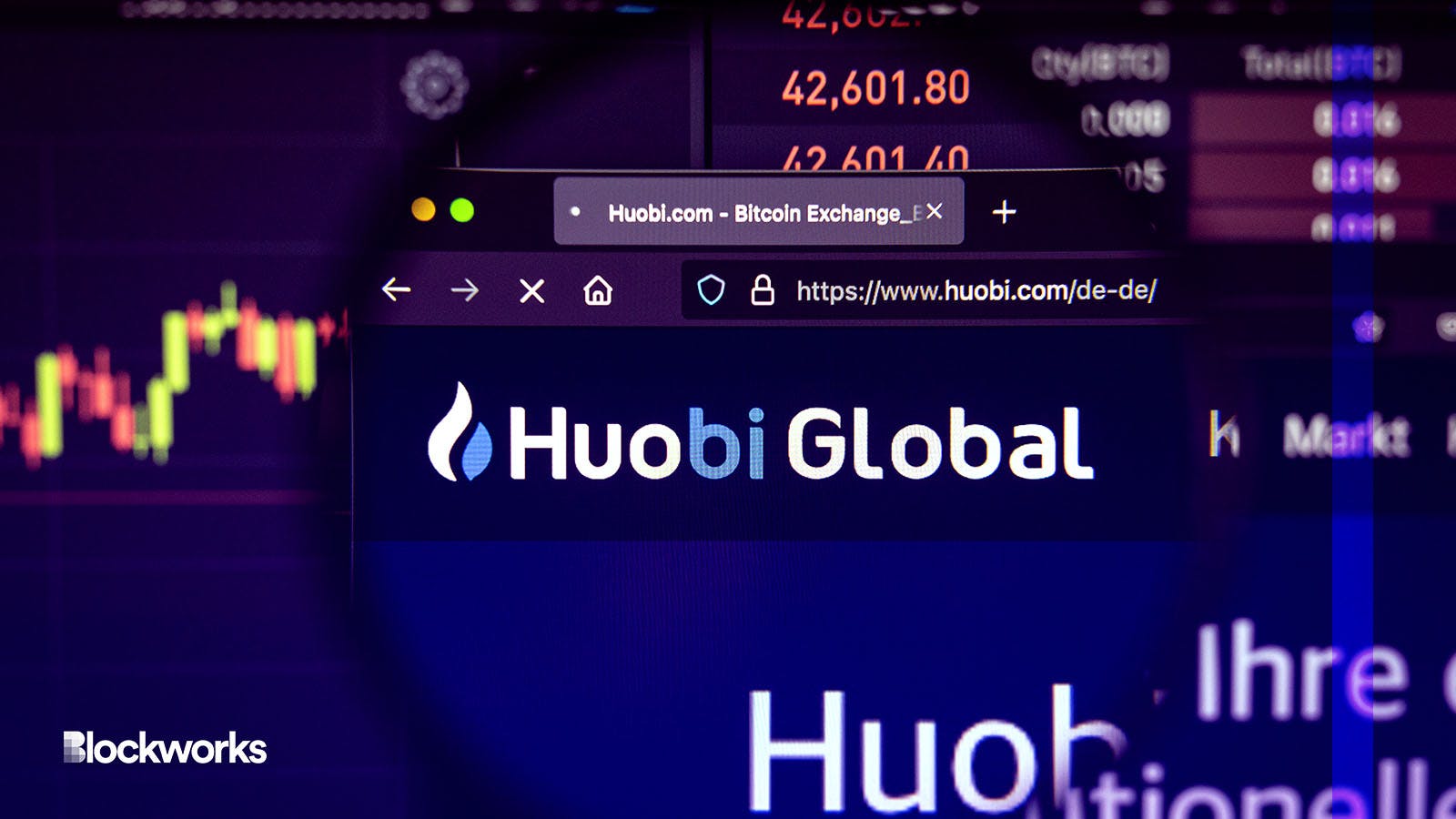Huobi’s spot market share jumps to highest point in two years
Huobi managed to stave off market concerns in its business, reflected in USDT stablecoin activity, rising to the second-highest in August spot trading activity

Dennis Diatel/Shutterstock, modified by Blockworks
Crypto exchange Huobi experienced a significant uptick in spot trading volume for the month of August as concerns surrounding its Tether (USDT) stablecoin reserves began to subside.
The Seychelles-registered exchange recorded $25.8 billion in spot trading volume by month’s end, making it the second-largest in the category over the previous 30-day period, CCData shows.
The surge also increased Huobi’s spot market share to 6.3%, its highest point since October 2021. The exchange now sits in second place, behind Binance, with a total of $875 million in daily trade volume compared to the top spot of $2.83 billion, Coinranking data shows.
By the end of July, Huobi was ranked 14th, a Wayback Machine snapshot shows.
 Source: CCData
Source: CCDataHuobi’s increase in trading activity coincides with lingering concerns about USDT reserves held on its platform, CCData said.
Recent reports suggested Huobi’s reserves had declined by as much as 34% in August over a short period, triggering skepticism from within the crypto community.
Local Chinese media reported earlier last month the detainment of at least three Huobi executives, adding further fuel to market speculation.
A Huobi spokesperson later denied the allegations and termed them as ‘FUD’ (Fear, Uncertainty, and Doubt), Blockworks previously reported.
According to DefiLlama, Huobi’s USDT balances fell by $150 million to $2.86 billion, between August 1 and 7, during the height of those concerns. After tracking higher in mid-August, that figure ended the month roughly 1% lower than August 7, to $2.83 billion, data shows.
While the company has denied any misconduct, it has also previously pointed out discrepancies in the data presented by DefiLlama.
CryptoQuant data, which analyzes Huobi Global’s Ethereum-based USDT reserves, show the figure instead jumped 73% between August 6 and August 30, to close off the month with a total of $91.6 million.
A spokesperson for the exchange told Blockworks at the time, the most accurate data could be sourced from Nansen, adding they are collaborating with DefiLlama to rectify errors.
Tron founder Justin Sun, also a member of Huobi’s global advisory board, urged the community to disregard the FUD in a post on X, formerly Twitter, earlier last month.
Get the news in your inbox. Explore Blockworks newsletters:
- The Breakdown: Decoding crypto and the markets. Daily.
- 0xResearch: Alpha in your inbox. Think like an analyst.






